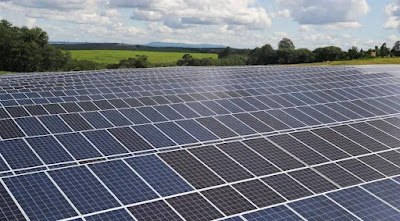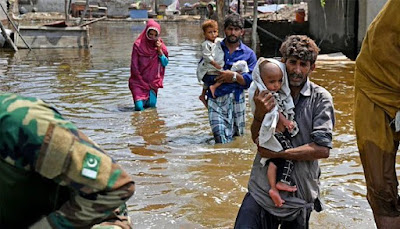Lula no estande de governos da Amazônia Legal nesta quarta (16) pela manhã na COP27, no Egito - Joseph Eid/AFP
Lula e a mulher, Janja, na chegada à COP27 na manhã desta quarta (16), em Sharm el-Sheikh, no Egito - Mohammed Abed/AFP
Ana Carolina Amaral
Jéssica Maes
Phillippe Watanabe
Folha.com.br
SHARM EL-SHEIKH (EGITO)
O presidente eleito Luiz Inácio Lula da Silva (PT), recebido com corredores lotados na COP27, conferência do clima da ONU, no Egito, na manhã desta quarta-feira (16), anunciou que pedirá às Nações Unidas que o Brasil seja anfitrião do evento em 2025.
"Vamos falar com o secretário-geral da ONU e pedir para que a COP de 2025 seja feita no Brasil e na Amazônia", disse Lula.
"Se a Amazônia tem o significado que tem para o planeta Terra, se tem a importância que todos vocês dizem que tem, que os cientistas dizem que tem, nós não temos que medir nenhum esforço para convencer as pessoas de que uma árvore em pé, uma árvore viva, vale mais do que uma árvore derrubada", afirmou também, em evento no estande de governadores da Amazônia Legal.
A fala sobre o pedido do Brasil para sediar a COP30, em 2025, veio após sugestão de Helder Barbalho (MDB), governador do Pará, responsável pelo convite para Lula ir à COP27.
"Os estados da Amazônia alcançaram um nível de capacidade de relacionamento com organismos internacionais, com a sociedade civil, com instituições financeiras e até mesmo entre si que deve ser incentivado não pode mais retroceder", salientam.
O tema do desenvolvimento sustentável da região também é destacado. A carta lembra que a Amazônia foi explorada ao longo dos anos, mas isso não se reverteu em progresso para a população local. "O modelo de desenvolvimento vigente, para ser economicamente pujante, trouxe o custo de ser ambientalmente devastador e socialmente excludente."
Os governadores afirmam que seria necessário "aperfeiçoar as capacidades humanas e institucionais e mobilizar a ação empresarial" para que esse desenvolvimento seja alavancado por meio da bioeconomia, transformando a floresta em pé em "commodity".
"É necessário conjugar os saberes técnico e ancestral para que o potencial produtivo da Amazônia se expresse por meio do aproveitamento racional das vocações da região e com retorno justo e equânime para as populações locais", escrevem.
Lula, após a leitura, disse concordar com o conteúdo.
"Eu só queria que os governadores levassem em conta que eu assinaria esse documento de vocês sem nenhum problema porque é mais do que justo que nós recuperemos a aliança entre as unidades federativas para que o governo federal governe em comum acordo com os governadores, e mais ainda que o governo federal volte a governar em acordo com os prefeitos", afirmou.
Ao chegar ao pavilhão da COP27 nesta manhã, por volta das 11h15 no horário local (6h15 pelo horário de Brasília), antes de se posicionar diante do público, Lula se reuniu em uma sala com governadores de Acre, Mato Grosso, Pará e Tocantins, além do senador Randolfe Rodrigues (Rede-AP) e Fernando Haddad, que integra a comitiva do governo de transição.
Lula e a comitiva ingressaram no evento usando credenciais de "país anfitrião", como convidados do governo do Egito.
Quase três horas antes do início previsto do evento, pessoas já se reuniam no pavilhão do consórcio dos governadores da Amazônia na COP27 —o estande de 120m2 ficou completamente lotado em pouco tempo.
Além de membros da imprensa nacional e internacional, que disputavam espaço para conseguir montar suas câmeras e tripés, membros da sociedade civil e parlamentares também tentaram garantir seus assentos desde cedo. Entre eles estavam o deputado Alessandro Molon (PSB-RJ) e Airton Faleiro (PT-PA).
No entanto, seguranças da ONU esvaziaram totalmente o espaço antes da chegada de Lula sob a justificativa de garantir a segurança do presidente eleito.
Na aglomeração que se formou durante a espera, os apoiadores, em especial os indígenas, puxaram coros de músicas de campanha.
Na entrada de Lula, jornalistas perguntaram ao petista como recebe as críticas por se deslocar à COP27 usando um jatinho do empresário José Seripieri Filho, conhecido como Júnior, fundador da Qualicorp e dono da QSaúde. Em resposta, o presidente eleito acenou e disse que falará depois sobre a questão.
Ainda nesta quarta, Lula fará um pronunciamento no espaço da ONU. Na quinta (17), ele se encontra às 10h (hora local, 5h do horário de Brasília) com representantes da sociedade civil brasileira e, às 15h (10h no horário de Brasília), participa do Fórum Internacional dos Povos Indígenas/Fórum dos Povos sobre Mudança Climática.
A repórter Jéssica Maes viajou a Sharm el-Sheikh, no Egito, a convite do Instituto Clima e Sociedade (iCS).
USA, China, Brazil
O projeto Planeta em Transe é apoiado pela Open Society Foundations.




.svg.png)





.jpeg)


.svg.png)


.svg.png)

.webp)




.svg.png)